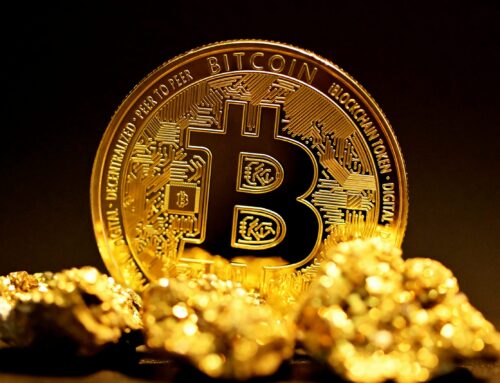Collective trauma’s contribution to climate change
February 9, 2025
Is the climate crisis connected to humanity’s unresolved trauma? In this conversation, Thomas Hübl, co-founder of the Pocket Project, a non-profit organisation dedicated to growing a culture of trauma-informed care, explores how unprocessed collective trauma shapes our world and influences our ability to respond to climate change.
A teacher, author, and international facilitator, Thomas speaks to Pocket Project CEO Kosha Joubert about integrating ancient wisdom with modern science to help societies heal systemic wounds. He shares insights on the deep connection between trauma and the climate crisis – and why inner healing is essential for meaningful external change.
“The biosphere is trying to heal itself—through us”
Kosha Joubert: Thomas, what inspired you to create the Pocket Project and dedicate yourself to healing individual, ancestral, and collective trauma?
Thomas Hübl: I’ve been working with collective trauma for 20 to 25 years, and the Pocket Project was one step along that journey. It was actually inspired by a conversation with my wife. I had spent nearly a decade volunteering with the Red Cross, which focuses on crisis intervention and survival needs. But we started asking, ‘What happens after?’
The Red Cross provides immediate support, but what about the long-term effects of war, crisis, and existential threats? How do we address the deeper wounds left behind? We wanted to create an NGO that focuses on integrating collective trauma – helping societies understand the patterns created by past crises and preventing them from repeating unconsciously.
That was the initial spark. Now, eight or nine years later, the Pocket Project has grown significantly, and it’s incredible to see the impact it’s having.
“Is climate change a symptom of trauma?”
Would it be too simplistic to say that the climate crisis is a symptom of collective trauma?
It’s a powerful statement, but it needs unpacking. At first glance, people think, ‘What does trauma have to do with climate change?’ because we see climate change as a matter of CO₂ emissions, industrial pollution and the economic systems driving it.
But trauma is about dysregulation. When collective trauma is present in a system – whether it’s a person, a society, or the entire biosphere – the flow of information becomes disorganised or even collapsed. This affects feedback loops, which are crucial for balance.
In a healthy system, nature regulates itself. But when trauma accumulates, certain regulatory mechanisms no longer function properly. If billions of people carry unresolved trauma – whether personal, ancestral, or collective – that unprocessed stress creates societal behaviors that are unsustainable. It leads to extraction, overconsumption and disconnection from life.
So yes, the climate crisis has economic and industrial causes, but underneath that, there is a deeper pattern. If we only address the surface-level causes without looking at why we created these systems in the first place, we’ll keep repeating the same mistakes.
“We are the biosphere”
You’ve often said that we are the biosphere, not just a part of it. Can you explain what you mean?
Many people see nature as something separate from themselves – something they observe from the outside. But we are nature. We are biosphere.
When we walk in a forest, we feel a deep sense of peace. That’s because our bodies evolved within natural environments. We are wired for that connection. And yet, we live in a world where we have been conditioned to feel separate from nature. This separation isn’t just a philosophical idea – it has real consequences.
The biosphere operates through constant feedback loops that regulate its health. When those loops are disrupted, the entire system is affected. The same is true for humanity. When we lose connection—to each other, to nature, to ourselves – it creates dysfunction. And when entire societies carry unprocessed trauma, that dysregulation manifests in large-scale crises.
The loss of biodiversity isn’t just an external problem. It has a psychological and emotional impact on humans. The destruction of ecosystems is happening both outside of us and inside of us. That’s why this work isn’t just about external solutions – it’s also about restoring balance within.
“Why is this trauma surfacing now?”
Studies show that 75 per cent of Gen Z fears for the future. Climate anxiety is rising rapidly. How do we understand this wave of fear?
We often look at climate anxiety as something new, but I see it as part of a deeper process.
Humanity has lived through centuries of war, colonisation, oppression – all of which left behind enormous collective trauma. But much of that pain was never fully acknowledged or processed. Instead, it was buried.
Now, as the climate crisis intensifies, those buried emotions are surfacing. Young people today aren’t just afraid of the future – they are carrying the unprocessed pain of the past. The trauma that was suppressed is now emerging through them.
This is an important moment. If we ignore or suppress these emotions, they will manifest as burnout, despair or division. But if we create spaces to process and integrate them, we can transform fear into action.
“A trauma-informed climate movement”
What does this mean for climate activism? How do we integrate trauma awareness into the movement?
The climate movement is already doing amazing work – scientific research, policy advocacy, technological innovation. But what’s missing is an understanding of emotional regulation.
When movements are driven by unprocessed trauma, they can become reactive, polarised, and exhausting. A trauma-informed climate movement would include inner work – helping activists develop resilience, process grief and avoid burnout.
It would also foster more dialogue. Right now, climate discussions often become confrontational. But if we recognise that everyone is carrying some level of trauma – whether from personal experiences or ancestral wounds – we can create more constructive conversations.
This isn’t about slowing down action. It’s about making the movement more effective by reducing resistance, polarisation and burnout.
“Can this process be fast enough?”
People say, “We don’t have time to heal – we need urgent action.” Can collective healing happen fast enough?
Think about how technology evolves. The first computers were slow, but now we have supercomputers in our pockets. Healing works the same way. Right now, it might feel slow because we’re just beginning. But as we integrate trauma awareness into mainstream society, the process will accelerate.
Some people say, “We don’t have time to heal because the house is burning.” But if people keep throwing fuel on the fire, we’ll never put it out. We need to address both – the immediate crisis and the deeper patterns that created it.
The good news is that life wants to heal. The biosphere is always trying to restore balance. Our job is to work with that natural healing process, not against it.
“A collective awakening”
It sounds like we’re on the cusp of a major shift – where climate action, ecosystem restoration and healing movements are merging.
Yes. We’re not just facing environmental collapse – we’re witnessing a collective awakening.
This is a time of detox. The pain we’ve ignored for centuries is surfacing because we can no longer look away. But this isn’t just a crisis; it’s an opportunity.
If we meet this moment with awareness and courage, we won’t just survive the challenges ahead – we will evolve into a more connected, resilient, and mature humanity.
Thank you, Thomas. This conversation makes me feel like we’re weaving a new story – one where healing and activism go hand in hand.
Thank you. And yes, I believe we’re just getting started.
Image by Transly Translation Agency.
Search
RECENT PRESS RELEASES
Related Post


